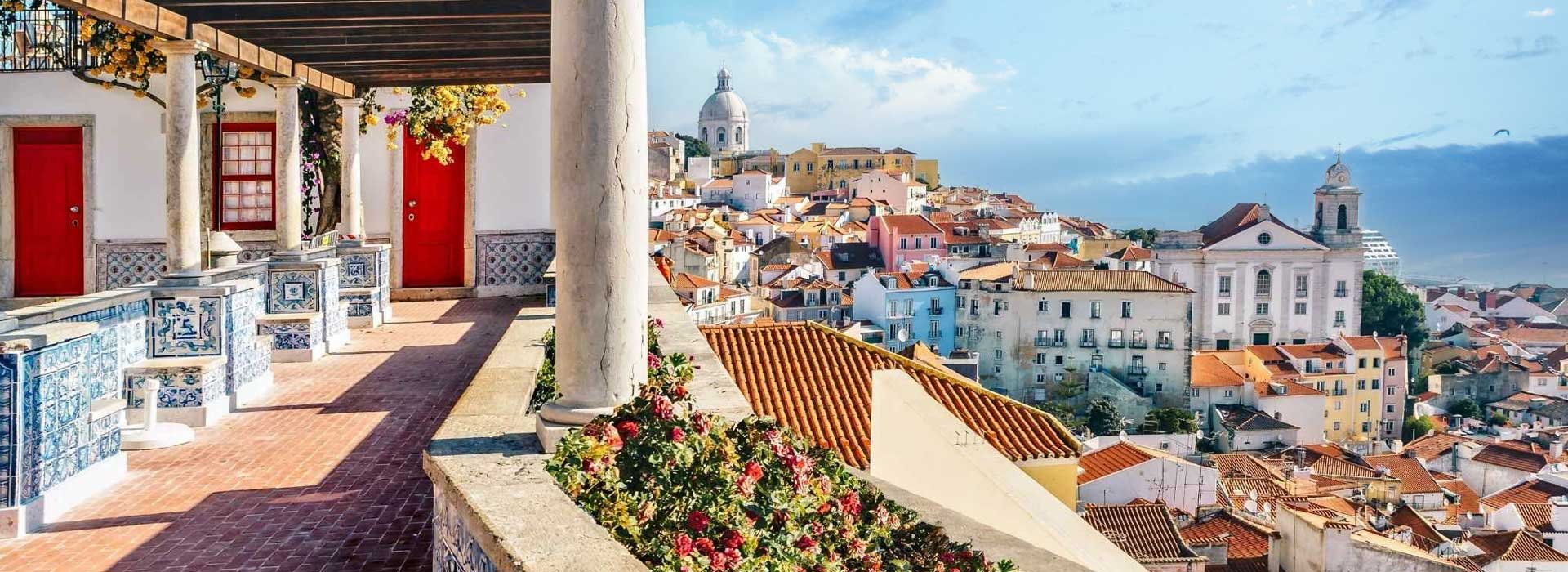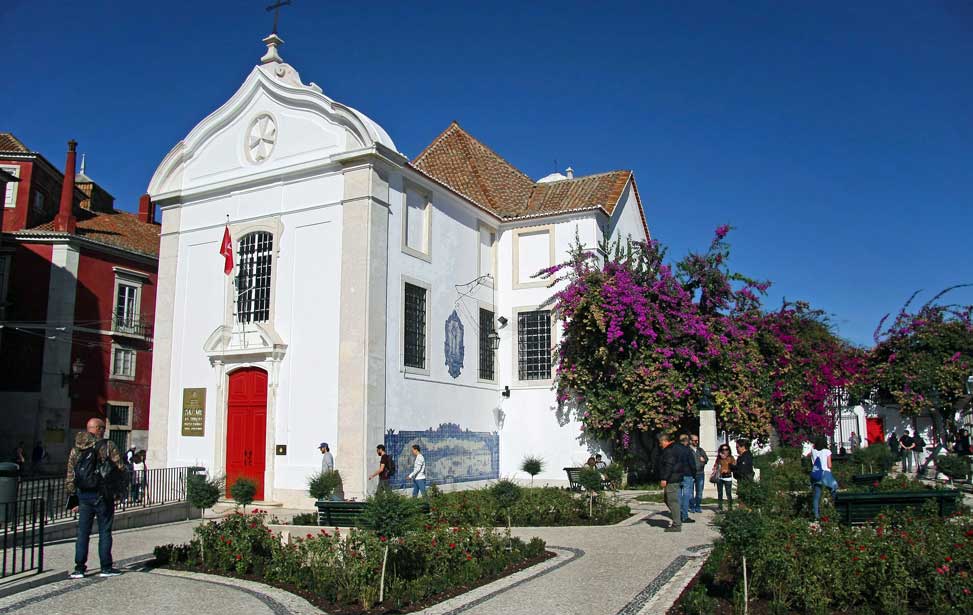
Miradouro de Santa Luzia
Miradouro de Santa Luzia is one of Lisbon's most enchanting viewpoints, offering breathtaking panoramic vistas of the Tagus River and the historic Alfama district. This iconic lookout point is snuggled in the heart of Lisbon, drawing locals and tourists alike with its stunning views and serene atmosphere.
The Miradouro de Santa Luzia features beautifully landscaped gardens, adorned with vibrant flowers, elegant pergolas, and traditional Portuguese azulejos (tile panels) depicting historical scenes and cityscapes. Visitors can relax on the benches and take in the mesmerising views of the river and the terracotta rooftops of the Alfama neighbourhood.
This picturesque spot is a perfect place to unwind and capture memorable photos of Lisbon's charming streets and landmarks. The nearby Santa Luzia Church adds to the cultural richness of the area, providing visitors with a glimpse of the city's rich architectural heritage. The purple bloom of bougainvillaea vines that grow on the church walls and on top of a pergola is a striking contrast to the blue sky. A patchwork of small flower beds are bordered by low hedges lay in front of the terrace with a statue of the bust of Lisbon historian Júlio de Castilho at its heart. A lower terrace has a wading pool which is a draw for the youngsters. The "ding-ding" from a passing tram adds a melodic addition to the serenity.
Miradouro de Santa Luzia is a must-visit destination for anyone exploring Lisbon, offering a peaceful escape from the bustling city and a chance to appreciate the beauty of the Portuguese capital. Whether you're enjoying a leisurely stroll, taking in the stunning scenery, or snapping photos, this viewpoint is sure to leave a lasting impression.
Igreja de Santa Luzia Church

It's foundations are in the shape of a Latin cross. The interior has a single nave and is somewhat stark by Portuguese standards. The church's most famed features are the blue azulejo tiles on it's southern exterior walls. One panel of tiles depicts the Praça do Comércio before the 1755 earthquake, whilst another commemorates the Christian siege of the castle in 1147 AD.
Santa Luzia, Largo de Santa Luzia, 1100 Lisboa, Portugal.
38° 42' 42.9" N | 09° 07' 49.4" W
Getting There
| 12E, 28E | |
| 737 |
Igreja de Santiago
On the opposite side of the road from the Miradouro de Santa Luzia stands the unassuming facade of the Igreja de Santiago church. Rebuilt after the 1755 earthquake, this church is dedicated to Saint James and dates back to the 1100s. It was here in 1479 where Christopher Columbus married Filipa Perestrelo. A small plaque on the right side of the green front doors mark the starting point of the Portuguese Camino, the way of St. James. It marks 610km to Santiago de Compostela in Spain, following thkje central route. A yellow arrow on the wall points to the Cathedral (Sé), the next stop on the pilgrimage route. The church is rarely open however if you're lucky to arrive when it's doors are open it's well worth popping in to admire the 19th century azulejo wall tiles depicting the “Mysteries of the Life of the Virgin” and a magnificent gold-covered altarpiece dedicated to Our Lady of the Rosary.Rua de Santiago 1100, 1100-411 Lisbon, Portugal. | 38° 42' 41.8" N | 09° 07' 51.5" W



 Lisbon Card Discounts
Lisbon Card Discounts






